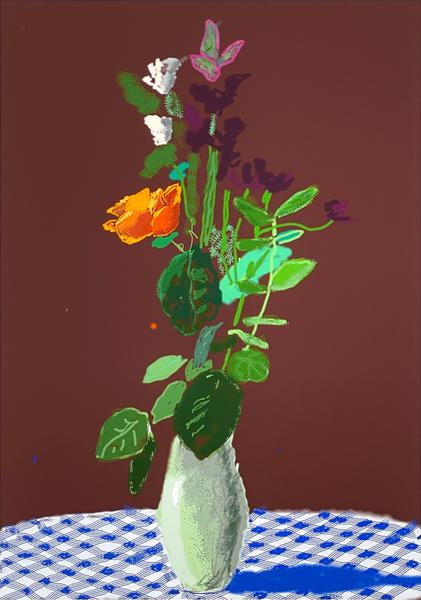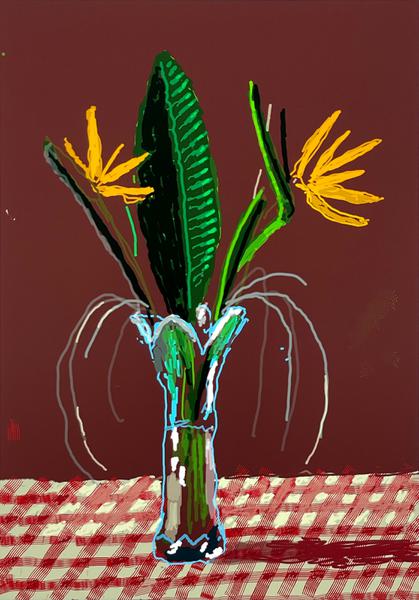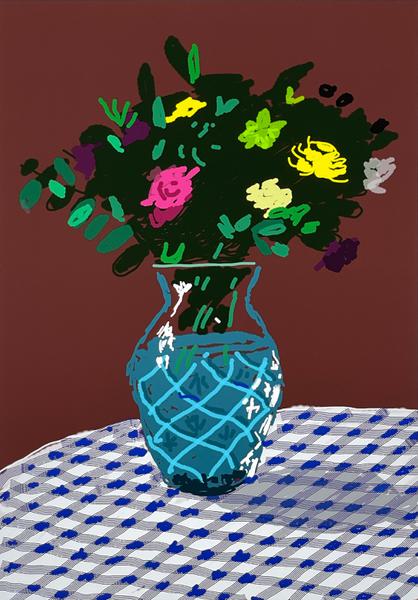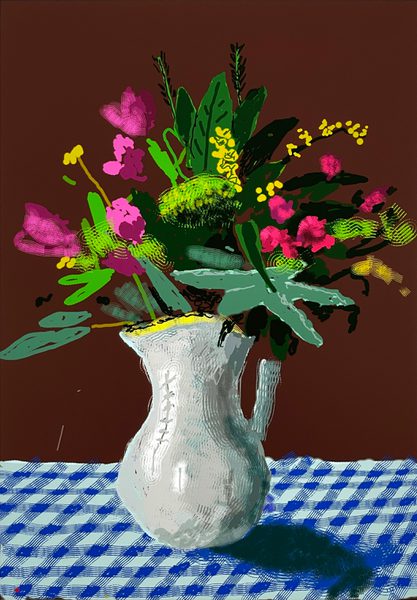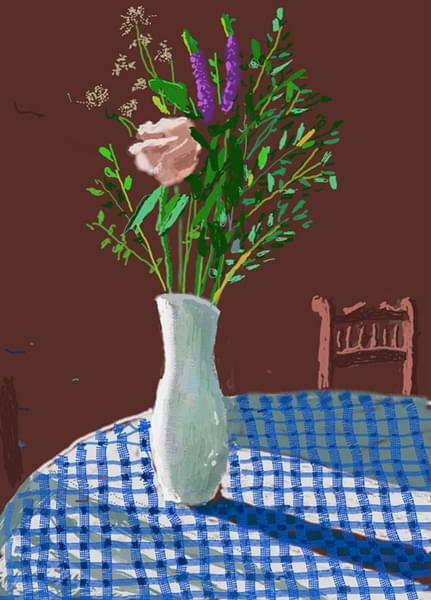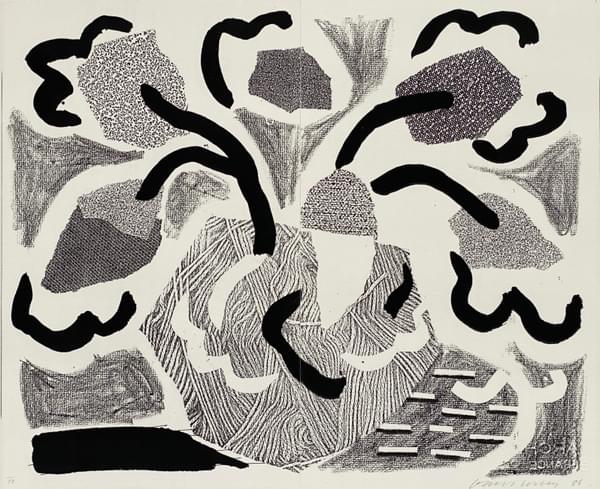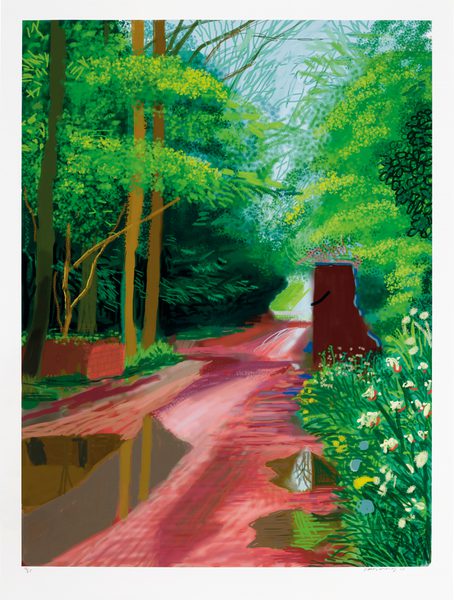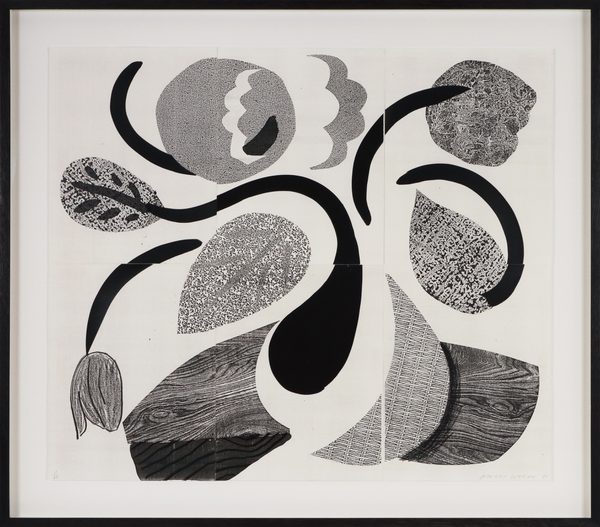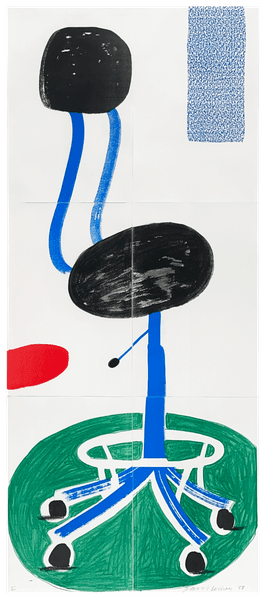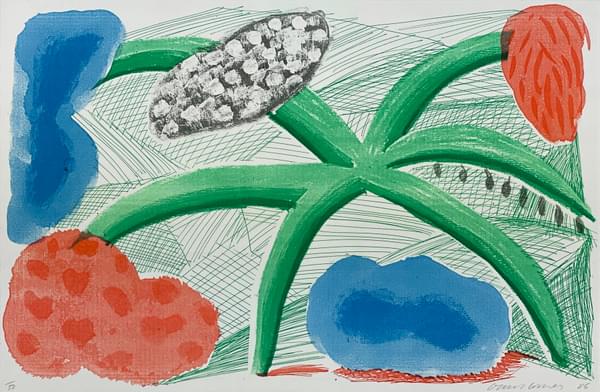Green Pool with Diving Board and Shadow
Rendered in a saturated palette of turquoise and sun-kissed yellow, Green Pool with Diving Board and Shadow of 1978 is one of fifteen unique variations of one of David Hockney's most iconic subjects. Inspired by the glistening swimming pool belonging to old friend and graphic designer, Kenneth Tyler, whom Hockney knew from his time in California, the artist spent days captivated by the endless variations of shadows, ripples and reflections in his friend's pool when visiting his New York studio and subsequently conceived there the Paper Pools series. A tactile medium, the textured quality of the pulped paper piqued the artist's interest; its absorbent quality acting as foil for the poolside waterscapes he sought to capture. Enchanted by this new medium, Hockney was intimately engaged in the process, from conception to creation. As Hockney explains of his Green Pool, 'we weren't making prints at all. Prints, after all, are exactly the same in an edition, and these were not. I couldn't walk away and ask Ken to print them; with a lithograph I could do that I would have to do them each time I kept pouring on this green with a spoon, and the white looks as though the water is dancing about. You had to put on the colour well, very carefully, and I couldn't rely on someone else doing this' (D. Hockney, quoted in N. Stangos (ed.), David Hockney: Paper Pools, New York 1980, pp. 21-28). A gift Hockney offered Tyler as a memento from the series, the graphic designer chose the present work, which was one of the earliest iterations from the series. These works form part of his larger innovative pulped Paper Pools series, many of which are now held in the permanent collection of the National Gallery of Australia.
The artist's fascination with the shimmering, amorphous quality of water can be seen in his art since at least 1964 when he first moved to California. The deep aquamarine colouring of the water, combined with the crisp linearity of the cropped viewpoint of the diving board in Green Pool with Diving Board and Shadow are reminiscent of works from Hockney's celebrated California Dreaming series, including the sunbathed scenes such as A Bigger Splash of 1967 at the Tate Gallery, London, which is currently the feature work at the gallery's exhibition of the same name concerning performance art. The suffused light of Green Pool with Diving Board and Shadow recalls the cooler east coast light and shade at play in New York; the black and red shadows placing this swimming pool far from the sun-kissed California landscape. The varying hues and tints of turquoise lightly melting into the white pulp infuse the pool with a shimmering effect that is enhanced by the textured relief of the paper. The distressed edges of the natural paper fibres lend a dynamism to the scene, giving the work the feeling that the water is lapping at the border and moving beyond it. Hockney especially captures the impression of moving water in the flickering shadow of the diving board undulating in the ripples. Enamoured with the potential held in this new medium and process, the artist averred 'you are forced to be very bold, and you cannot be finicky with it, you can't use lines at all' (D. Hockney, quoted in N. Stangos (ed.), David Hockney: Paper Pools, New York 1980, p. 21).
Distinguishing itself from later works in the series where the topmost band of colour alludes to a soft interplay of arboreal shadows or foliage, the black and red area in Green Pool with Diving Board and Shadow suggests more of an abstract quality. Indeed the absence of a figure and the clean linearity of the edging of the pool are reminiscent of the artist's California Dreaming series and could arguably have been inspired by Ellsworth Kelly's pulped works that Hockney encountered at Kenneth Tyler's Tyler Graphics Ltd. workshop in Bedford, New York. Tyler had run the graphic design firm Gemini Ltd. in California and had recently opened a new workshop outside of New York City and encouraged Hockney to stay on at the workshop to experiment with this new paperpulping technique that the printmaker had been exploring with Kelly and Kenneth Noland the year before. Recounting his time in New York Hockney enthused, 'the paper is very beautiful, the surface, there is no such thing as a flat colour, and they are very subtle at times. They are like paintings, which is why I stayed; if they hadn't been like paintings, I think I would have left after doing the first two or three small ones, I would have thought enough was enough' (D. Hockney, quoted in N. Stangos (ed.), David Hockney: Paper Pools, New York 1980, p.100).
The paper pulping technique fused paper-making and painting in a way that Hockney felt allowed him to be bolder, to move beyond the line and to capture the essence of the image without the detail. Hockney studied Tyler's pool in New York at different times of day and night through Polaroid shots and subsequent drawings in order to muse on the many different light and colour changes that the pool underwent. From these drawings, Hockney created cloisonné-like moulds, pouring liquid coloured pulp directly over flat sheets of wet, newly made paper. The artist then put the finishing touches on the work by directly applying coloured pulp and liquid dyes freehand. In this new medium, Hockney utilised copious amounts of water in his paradoxical quest to capture in a still image the constant rippling on the pool's surface. As the artist noted in his essay on the series, 'I kept looking at the swimming pool; and it's a wonderful subject, water, the light on the water. And this process with paper pulp demanded a lot of water; you have to wear boots and rubber aprons. I thought, really [what] I should do [is], find a watery subject for this process, and here it is; here, this pool, every time that you look at the surface, you look through it, you look under it' (D. Hockney, quoted in N. Stangos (ed.), David Hockney: Paper Pools, New York 1980, p. 21).
Green Pool with Diving Board and Shadow
- Artist
- David Hockney (b. 1937)
- Title
- Green Pool with Diving Board and Shadow
- Medium
- Coloured and pressed paper pulp
- Date
- 1978
- Size
- 127.6 x 82.2 cm: 50¼ x 32¾ ins
- Inscriptions
- Signed by the artist and dated 'D.H. 78' lower right; signed 'David Hockney' verso
- Provenance
- Mr. and Mrs. Kenneth Tyler, New York; Lindsay Green, Los Angeles; Private Collection, Santa Monica; LA Louver, Los Angeles
- Literature
- N. Stangos (ed.), David Hockney: Paper Pools, New York 1980, pp. 30-31 (other examples illustrated)
- Reference
- C12-02
- Status
- No Longer Available
Available Artists
- Albers Anni
- Ancart Harold
- Andre Carl
- Avery Milton
- Baldessari John
- Barnes Ernie
- Castellani Enrico
- Clough Prunella
- Crawford Brett
- Dadamaino
- de Tollenaere Saskia
- Dyson Julian
- Elsner Slawomir
- Freud Lucian
- Gadsby Eric
- Gander Ryan
- Guston Philip
- Hartung Hans
- Hayes David
- Held Al
- Hepworth Barbara
- Hill Anthony
- Hitchens Ivon
- Hockney David
- Hutchinson Norman Douglas
- Jenney Neil
- Katz Alex
- Kentridge William
- Knifer Julije
- Kusama Yayoi
- Le Parc Julio
- Leciejewski Edgar
- Léger Fernand
- Levine Chris
- Marchéllo
- Martin Kenneth
- Mavignier Almir da Silva
- Miller Harland
- Mitchell Joan
- Modé João
- Moore Henry
- Morellet François
- Nadelman Elie
- Nara Yoshitomo
- Nesbitt Lowell Blair
- Nicholson Ben
- O'Donoghue Hughie
- Pasmore Victor
- Perry Grayson
- Picasso Pablo
- Pickstone Sarah
- Prehistoric Objects
- Riley Bridget
- Ruscha Ed
- Sedgley Peter
- Serra Richard
- Shrigley David
- Smith Anj
- Smith Richard
- Soto Jesús Rafael
- Soulages Pierre
- Spencer Stanley
- Taller Popular de Serigrafía
- The Connor Brothers
- Vasarely Victor
- Vaughan Keith
- Whiteread Rachel
- Wood Jonas
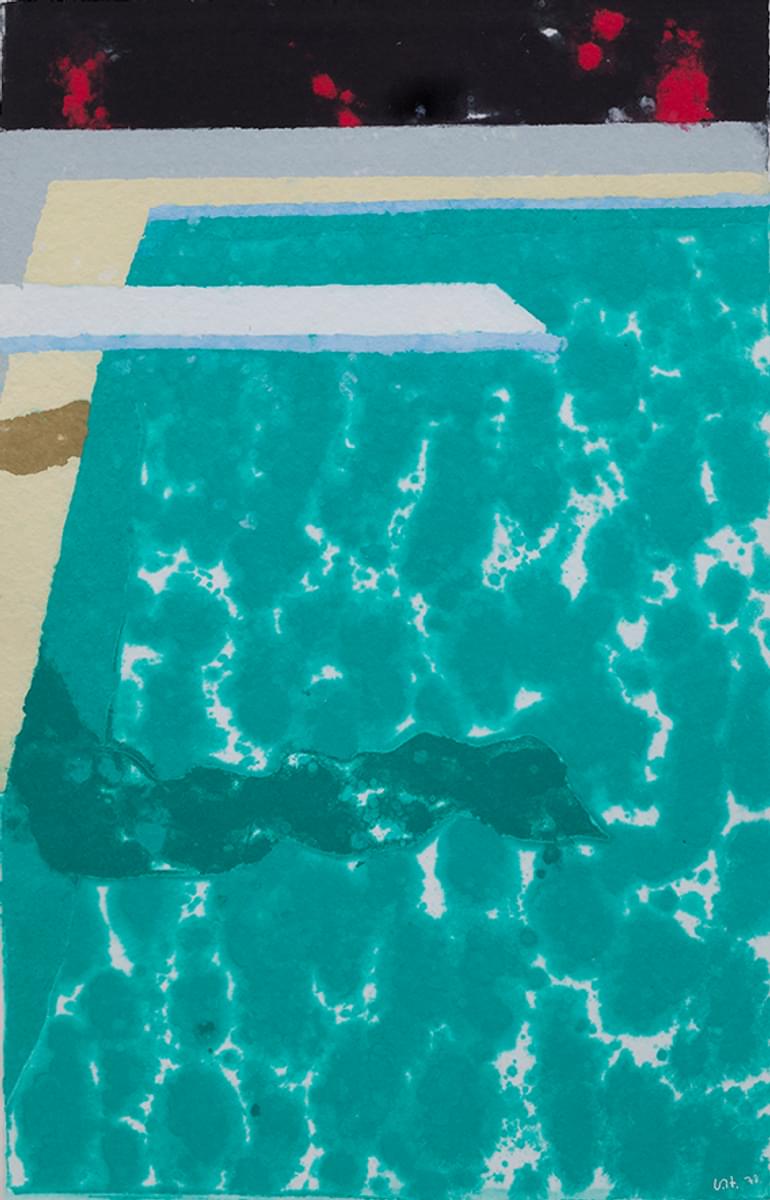
![Untitled [Water] - David Hockney](https://images.archeus.com/production/AC25-02-HOCKNEY-Water-Study-frame-crop.jpg?w=600&h=600&q=60&auto=format&fit=clip&dm=1759324888&s=3221efcb271df836a8c1f8fcc855c56c)


